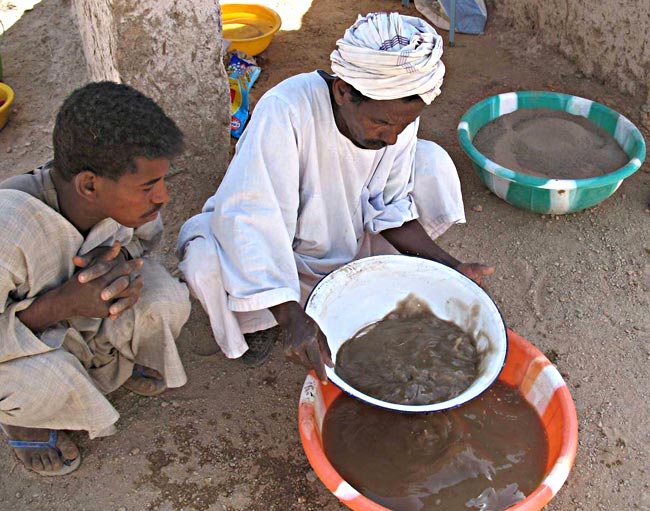Clue to Egypt's Gold Source Discovered

An ancient gold-processing and panning camp has been discovered along the Nile River and is thought to be the first physical evidence of where Egypt obtained its vast gold stashes.
Aside from one gold collection site the team said was “mentioned only in passing” during the 1960s, the riverside camp about 800 miles south of Cairo is the first-known of its kind in Nubia, the region now known as northern Sudan. The archaeologists think non-Egyptians called Kushites, who ruled the region, gathered gold at the site from about 2000 B.C. to 1500 B.C. and used it to trade with Egypt.
“Based on what we’ve found, the kingdom of Kush was significantly larger and more powerful than anyone thought,” said Geoff Emberling, an archaeologist at the University of Chicago’s Oriental Institute and co-leader of the expedition. Emberling explained most other clues of the Kushite’s reach have been inferred from written Egyptian records.
Bruce Williams, also an archaeologist at the Oriental Institute and expedition co-leader, agreed.
“If Kushites were processing gold way out here, more than 200 miles from their capital city Kerma, there had to have been good logistics and discipline,” he said of the site at Hosh el-Guruf. “You can only imagine the chaos of an unattended gold mining operation.”
To the untrained eye, the gold-processing center is a field of rocks about 150 feet from the Nile’s banks. But closer inspection revealed 55 two-foot grindstones used to crush gold ore, the team said. Once macerated into dust and gold flakes, camp workers may have sifted out the bounty using the Nile’s waters.
Emberling thinks powerful leaders in Kerma, located 225 miles downstream, demanded the rural gold product in a customary but unequal exchange for trinkets and supplies. “The process probably went like this: ‘We send you the trinkets, you send us the bags of gold and we give you more status,’” Emberling said.
Sign up for the Live Science daily newsletter now
Get the world’s most fascinating discoveries delivered straight to your inbox.
The archaeologists think the Kushite rulers in Kerma ultimately used the gold as leverage against the powerful Egyptians, who eventually took over the weakened Nubian kingdom with military might by 1500 B.C.
“The kingdom of Kush and the Egyptians were close trading buddies, but Egypt had three classic enemies: the Asiatics, the Libyans and the Kushites,” Emberling said. “Their cultures clashed, and the Kushites had more resources available to them, which the Egyptians wanted.”
Both Emberling and Williams noted there is still much to learn from the new site, but all archaeological teams in the area are scrambling to excavate a 100-mile stretch of the Nile, which will flood in about a year.
“There’s a dam being built just upstream, and it’s almost done. About 2,500 sites no one has even touched are going to be destroyed,” Emberling said. “We have only one more season to salvage these sites, and that’s it. In spite of all the work we’re doing, we’re going to lose an enormous amount of history.”
In addition to the University of Chicago’s Oriental Institute, Williams and Emberling’s expedition was funded by the National Geographic Society and the Packard Humanities Institute.









